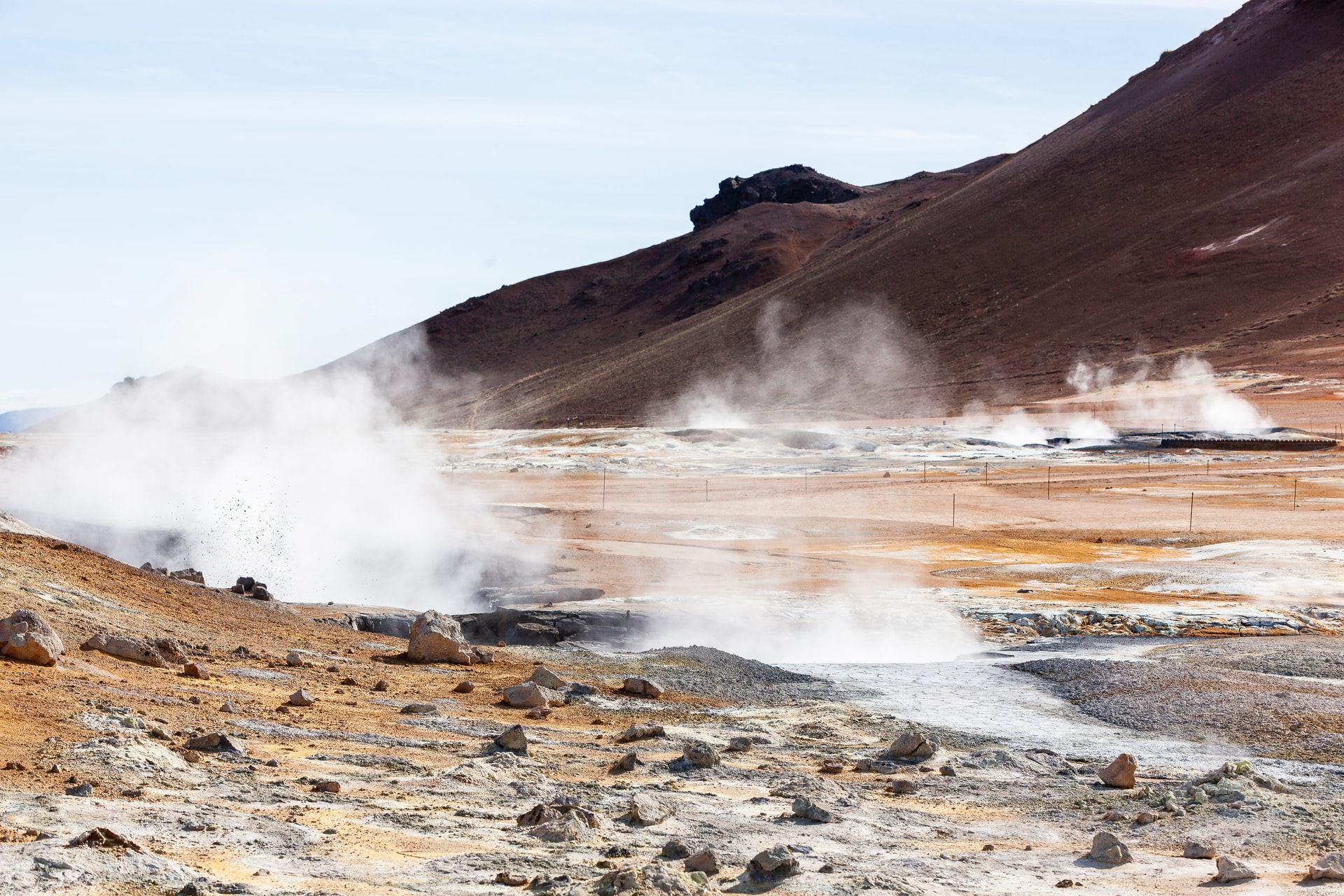
6 Pros and Cons of Geothermal Energy
We are reader-supported. When you buy through links on our site, we may earn affiliate commission.
Countries like Iceland are championing geothermal power as the future of clean, renewable energy. If geothermal energy is such a great solution for the world’s ongoing energy needs, then why aren’t more countries adopting it?
Although geothermal energy is an excellent alternative to other types of energy sources, there are a few good reasons why it hasn’t yet taken the world by storm. Here are three pros and three cons for using geothermal energy as the world’s primary energy source.
1. It’s Sustainable and Abundant
Geothermal energy plants tap the heat of magma, or molten rock, found below the Earth’s crust. Magma is warmed by the Earth’s core, which still stores heat from when the planet was formed. Heat is also created deep inside the Earth by the decay of radioactive elements.
Earth’s internal heat is one of the things that makes life on Earth possible. Scientists say that geothermal heat stores won’t run out during the existence of the Earth, and using Earth’s heat won’t make a significant difference to the temperature of the planet. That means that geothermal heat has the potential to be a sustainable source of energy for the long term.
2. It Requires Less Land
In comparison to other sources of sustainable energy, like solar plants and wind farms, geothermal plants require very little land for a high energy yield. For example, geothermal plants can produce a terawatt hour of energy on only seven square miles. Solar and wind plants take two to four times as much land to create the same amount of energy.
Instead of relying on surface elements like the sun and wind, geothermal energy is fueled by a consistent source of energy found underground. Drilled wells can spread out under the ground to increase production with minimal habitat reduction or environmental impact.
3. It Causes Minimal Pollution
Once a geothermal plant is built, it runs on its own source of energy instead of burning fossil fuels. This means that in comparison to other types of power plants, geothermal plants create very small amounts of greenhouse gases. According to the United States Department of Energy, geothermal energy is cleaner than any other type of large-scale energy plant.
Like other power plants, geothermal energy plants can impact the quality of air and water in their immediate vicinity. However, these levels of pollution seem to be much smaller than usual, and increasing innovations are reducing pollution and increasing the environmental safety of using geothermal energy.
4. It Can’t Be Accessed Everywhere
Of all the pros and cons of geothermal energy, it’s reliability is by far the greatest. However, although the Earth has abundant heat under its crust, this heat is not always easy to access. Most geothermal plants are built along fault lines where magma is closer to the Earth’s surface. Areas that see more volcanic activity like Iceland and California tend to have more geothermal plants for this reason.
Unfortunately, ideal locations for geothermal plants are limited. Each kilometer of underground drilling makes a plant more expensive to build. However, smaller geothermal heat pumps can be used to draw enough heat from higher layers of the Earth’s crust to bring energy to residences.
5. It Can Cause Seismic Activity
There have been some concerns that geothermal technology, like fracking, can cause earthquakes. In fact, one recorded incident in South Korea directly connected geothermal drilling activity with a significant seismic event.
Most of these concerns are connected to a type of geothermal drilling known as enhanced geothermal systems, or EGS. The heat extraction method in this system is reminiscent of fracking in that it can cause instability underground. Hopefully, newer forms of geothermal power plants will move away from EGS toward closed-loop systems with much less risk.
6. It Has High Initial Costs
Another issue with geothermal energy is cost. Although using this form of energy can be cheaper over the long term, funding a geothermal plant is extremely expensive in comparison to other energy sources. For example, geothermal energy plants cost from $4000 to $6000 for each kilowatt-hour. In contrast, solar plants cost $1,250 per kilowatt-hour, and wind farms cost around $1,550.
In addition to this high cost, building a geothermal energy plant is also high-risk because it can take a while to find a good well. Enhanced extraction techniques like EGS can reduce risk but come with their own set of problems.
Is Geothermal Energy the Future?
Some countries use geothermal energy plants to harness the heat found under the Earth’s surface. In comparison to other kinds of energy plants, geothermal energy is renewable and sustainable. It also uses significantly fewer fossil fuels to run and emits far fewer pollutants into the environment.
However, as these six pros and cons of geothermal energy show, this energy source isn’t perfect. There are several economic and environmental reasons why it isn’t being used more widely. Over time, continued innovation will make geothermal energy safer and more effective, and it may become more widely used.
Share on
Like what you read? Join other Environment.co readers!
Get the latest updates on our planet by subscribing to the Environment.co newsletter!
About the author
Jane Marsh
Starting from an early age, Jane Marsh loved all animals and became a budding environmentalist. Now, Jane works as the Editor-in-Chief of Environment.co where she covers topics related to climate policy, renewable energy, the food industry, and more.





